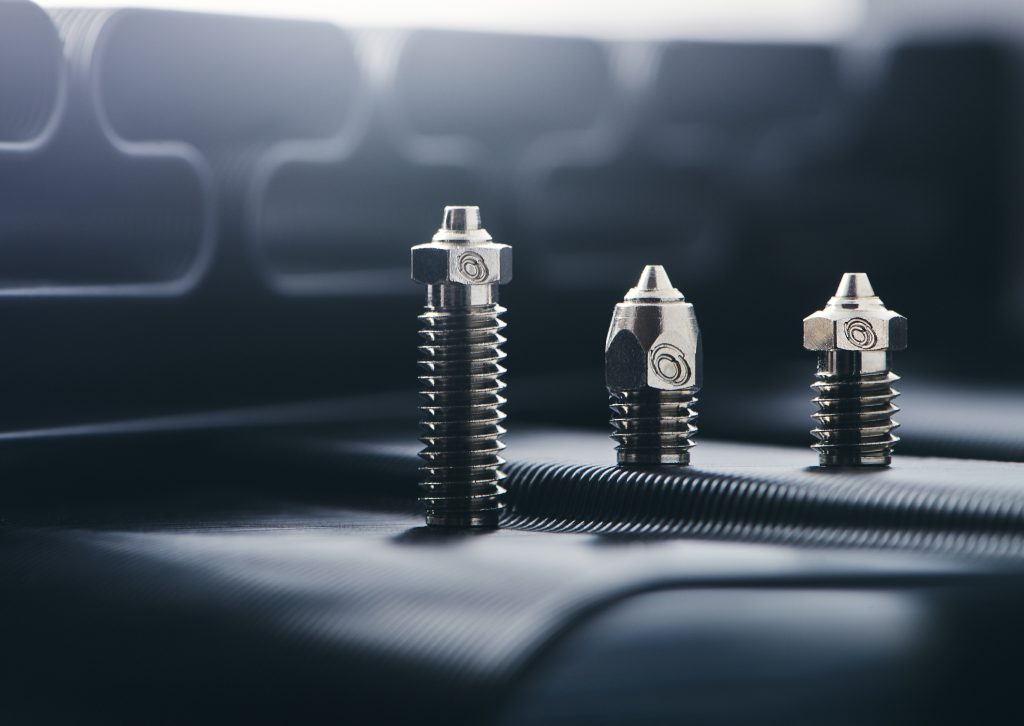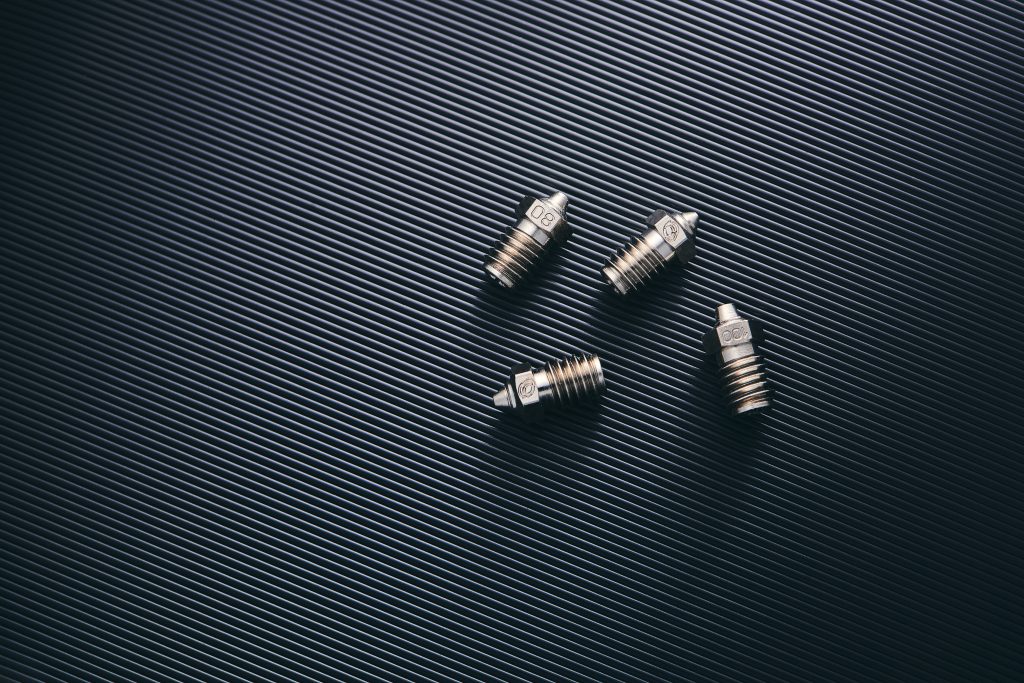Martin Bondéus, CEO and Founder of Bondtech, the Swedish manufacturer of world-leading filament feeders, believes that the company’s Core Heating Technology (CHT) are “the best value for money upgrades that will impact your 3D printing.”
Speaking to 3D Printing Industry, he explained how the company’s CHT nozzle range is tapping into a growing trend within the FDM 3D printer market, offering notable benefits for consumer and industrial-level users alike.
Bondéus also elaborated on how the Bondtech CHT ® product range overcomes key challenges faced by 3D print farms and high-frequency users and outlined his belief that “in the future, all nozzles will be CHT.”

CHT nozzles boost 3D printing speeds
According to Bondéus, CHT nozzles capitalize on a key trend dominating the FDM 3D printer market. Over recent years, both consumer and industrial FDM 3D printer manufacturers have sought to develop new systems that meet demand for faster 3D printing speeds.
“CHT nozzles allow users to increase the speed limit of their 3D printer,” stated Bondéus. “This directly translates to more volumetric flow, which is often a bottleneck for faster printing. The quicker you go, the quicker you need to melt the filament.”
CHT overcomes this bottleneck with a unique and patented material inlet geometry. This splits the filament into three channels within the nozzle, melting the material from the inside out. “By doing this, the material has a lot more surface contact with the metal, which efficiently transfers the heat into the plastic,” added Bondéus. This process causes the material to melt faster, allowing for a higher volumetric flow and faster 3D print speeds.
In fact, a recently published Bondtech white paper highlighted that CHT nozzles can increase average 3D printing speeds by over 30%. The study found that the company’s unique CHT geometry has the largest impact on boosting these speeds.
“In the study, we identified that the three main things affecting the melt flow are the nozzle’s bore diameter, temperature, and inlet geometry,” explained Bondéus. “The CHT inlet geometry increased the melt flow by 63%, whereas the impact from increasing the nozzle temperature was 7% per each additional 20°C, and 6% for each 0.4mm of increased nozzle diameter.”
Bondtech’s CHT technology offers notable value for 3D print farms, for whom high productivity is key.
According to the company’s CEO, the nozzles may enable 1-hour and 26-minute time savings on 3D print cycles that normally take 6 hours. Factoring in the nozzle’s price and a $15 hourly rate for workers, the CHT nozzle has already paid for itself after the first 3D print job.
CHT nozzles also optimize layer adhesion, significantly improving the strength of the final part. This is made possible by the unique inlet geometry, which heats the filament more homogeneously than conventional nozzles and from its core. This is essential for industrial-scale customers producing functional, end-user parts that require optimal properties.
Bondtech CHT BiMetal™ Nozzle in action. Video via Bondtech.
Bondtech’s CHT product lineup
Bondtech CHT ® nozzles are available in standard Nickel Coated Brass and Nickel Coated BiMetal versions, which cater to desktop, professional, and industrial-scale 3D printers. Compatible with both 1.75 mm and 2.85 mm hotends, these nozzles are available in the popular RepRap, MK8, Volcano, and Spider standards.
The Nickel coating of both models provides key protection against corrosion, erosion, and abrasion. This also provides a lower coefficient of friction, allowing material to be fed more freely into the nozzle.
The standard range of brass-coated nozzles is optimized for users 3D printing with non-abrasive filaments such as PLA, ABS, and PETG. Bondtech’s BiMetal CHT nozzles, on the other hand, are well suited to more costly, abrasive materials that have been infused with additives, such as carbon fiber, to enhance their properties.

Notably, Bondtech CHT BiMetal™ nozzles are more efficient than alternative hardened steel offerings. When compared to other nozzles that incorporate hard crystal tips, Bondtech’s offering boasts a longer service life and reduced abrasion at the inlet. This results in increased productivity and fewer nozzle replacements, translating to cost savings for the user.
“Abrasive filaments wear down brass nozzles quite rapidly,” explained Bondéus. “With our BiMetal nozzles, customers can process more expensive materials for much longer, with gains in productivity.”
The nozzles can be purchased size by size, or in size breakout packages at a discounted price. The comprehensive lineup offers compatibility with a wide range of 3D printing setups, providing both hobbyist and industrial users with high-quality options for high-speed extrusion.

Bondtech’s growth roadmap
Bondéus sees an exciting future ahead for Bondtech CHT ® technology, which is attracting notable demand from within the 3D printing industry.
This demand is being driven by a trend towards faster 3D printing speeds, something which the company wants to further capitalize on in the future. “We are working to comply with the demand of customers wanting to 3D print faster. So we are looking at longer nozzles for longer hotends,” stated Bondéus.
As part of this goal to reach more customers, Bondtech has licensed its CHT technology to UK-based 3D printer hotend manufacturer E3D, which is incorporating the novel inlet geometry into its high-flow nozzles.
Looking to the future, Bondéus plans to expand the CHT product lineup to meet new nozzle standards and geometries, increasing compatibility with more 3D printers. “This is a key area of expansion for our CHT products,” stated Bondéus. “As new standards come up, we plan to develop new products to meet those standards.”
To facilitate the growing filament extruder and nozzle product portfolio, Bondtech is looking to scale up its production capacity. This will see the company open a new facility and grow its team.
“We want to create possibilities for future expansion both in people and in technology,” added Bondéus. “We are always looking for ways to make 3D printers better and easier to use. There is a lot of innovation and development in the future for us.”
Bondéus is holding his card close to his chest in terms of what these developments will entail. However, he teased that the industry can expect big things from the company in the near future.
“We are currently working on something that will revolutionize the 3D printing world. It will present a paradigm shift, and will be completely different from what we are seeing today,” offered Bondéus. “The new facilities will give us the capacity to scale up and achieve this.”
What is the future of 3D printing?
What near-term 3D printing trends have been highlighted by industry experts?
Subscribe to the 3D Printing Industry newsletter to keep up to date with the latest 3D printing news. You can also follow us on Twitter, like our Facebook page, and subscribe to the 3D Printing Industry Youtube channel to access more exclusive content.
Are you interested in working in the additive manufacturing industry? Visit 3D Printing Jobs to view a selection of available roles and kickstart your career.
Featured image shows Bondtech CHT BiMetal™ nozzles. Image via Bondtech.

